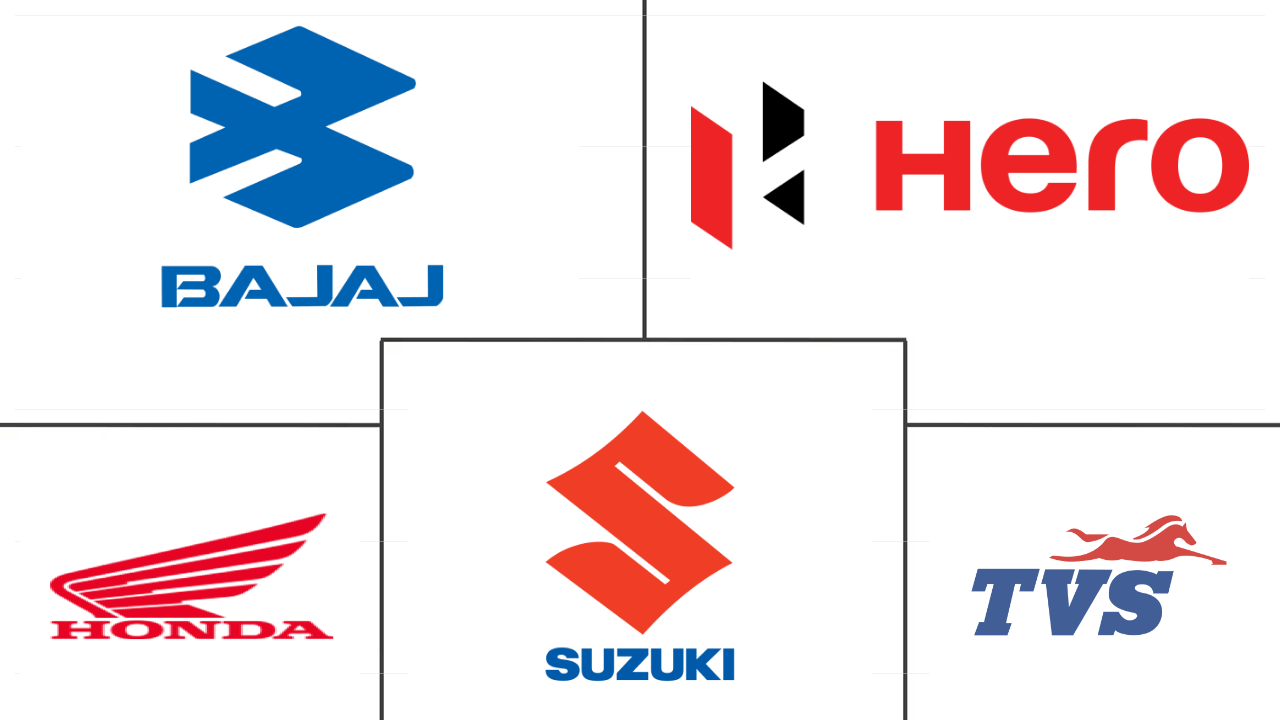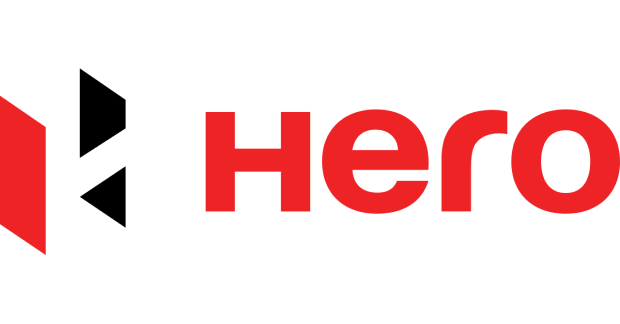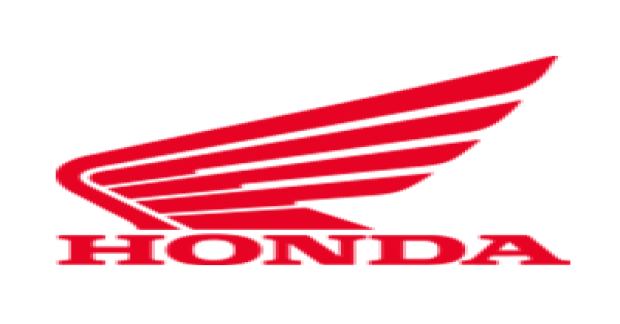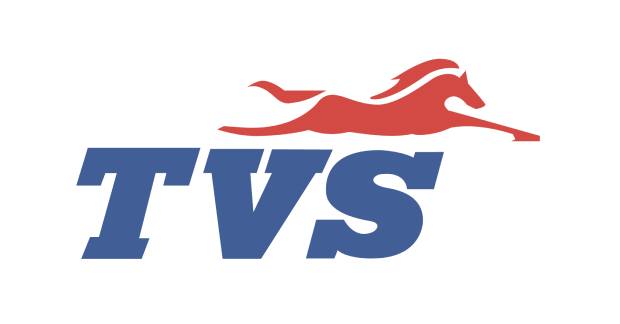India Two Wheeler Market Size
|
|
Study Period | 2017 - 2030 |
|
|
Market Size (2024) | USD 299.2 Billion |
|
|
Market Size (2030) | USD 335.1 Billion |
|
|
Largest Share by Propulsion Type | ICE |
|
|
CAGR (2024 - 2030) | 1.91 % |
|
|
Fastest Growing by Propulsion Type | Hybrid and Electric Vehicles |
Major Players |
||

|
||
|
*Disclaimer: Major Players sorted in no particular order |
India Two Wheeler Market Analysis
The India Two Wheeler Market size is estimated at 299.2 billion USD in 2024, and is expected to reach 335.1 billion USD by 2030, growing at a CAGR of 1.91% during the forecast period (2024-2030).
299.2 Billion
Market Size in 2024 (USD)
335.1 Billion
Market Size in 2030 (USD)
2.42 %
CAGR (2017-2023)
1.91 %
CAGR (2024-2030)
Largest Segment by Propulsion Type
92.71 %
value share, ICE, 2023
ICE two-wheelers dominate due to their affordability, widespread availability, and well-established refueling infrastructure, making them a popular choice among consumers.
Fastest-growing Segment by Propulsion Type
21.12 %
Projected CAGR, Hybrid and Electric Vehicles, 2024-2030
Electric two-wheelers are growing rapidly due to government incentives, rising fuel prices, and increasing consumer awareness of the benefits of sustainable transportation options.
Leading Market Player
31.38 %
market share, Hero MotoCorp Ltd., 2023

Hero Moto Corp Ltd is the major player in the Indian market which concentrated on new innovations and partnerships in the past few years and has grown at a CAGR of 4.4% during the historical period.
Second leading Market Player
23.22 %
market share, Honda Motorcycle & Scooter India Pvt. Ltd., 2023

Honda Motorcycle is the second leading player in the Indian two-wheeler market due to its focus on customer satisfaction and technological advancements.
Third Leading Market Player
16.83 %
market share, TVS Motor Company Limited, 2023

TVS Motor Company Ltd. is the third leading player in the Indian two-wheeler market due to its focus on design innovation, technological advancements, and strong customer service.
India's two-wheeler market growth from 2024 to 2030 reflects rising EV adoption, driven by tech, policy, and a shift in consumer preferences
- In 2023, the total sales for two-wheelers in India showed positive growth, reaching 16,999,920 units, an increase from 15,862,087 units in 2022. This growth demonstrates a rebound in the two-wheeler market, reflecting a recovering economy and an increasing consumer demand for personal mobility solutions. The projections for 2024 indicate a further increase to 17,843,445 units, hinting at a continued upward trend. This positive momentum is likely driven by a combination of factors, including urbanization, the need for affordable transportation, and a growing young population.
- The Indian government's support for sustainable transportation, particularly through incentives for electric vehicle (EV) purchases and infrastructure development, has significantly impacted the two-wheeler market. These initiatives, alongside the rising fuel prices, have accelerated the shift toward electric and hybrid two-wheelers, making them a more appealing option for consumers. The market's growth is also supported by the introduction of new models with advanced features, catering to a wide range of consumer preferences and needs.
- From 2024 to 2030, the Indian two-wheeler market is projected to witness consistent growth, with sales hitting 22,764,730 units by 2030. This forecast underscores the compounding impact of sustained economic growth, urbanization, and technological advancements in the market. The surge in electric two-wheelers will be a pivotal driver as hybrid and electric variants gain prominence due to their eco-friendly attributes, cost efficiency, and favorable government policies.
India Two Wheeler Market Trends
Government initiatives and stringent norms drive rapid growth in the electric vehicle market in India
- India's electric vehicle (EV) market is in a growth phase, with the government actively formulating strategies to combat pollution. The Fame India scheme, launched in 2015, has played a pivotal role in driving vehicle electrification. Building on its success, Fame Phase 2, active till April 2022, further bolstered EV sales, especially in 2021, with the government offering subsidies like INR 10,000 grants for electric cars with battery capacities up to 15 kWh.
- State governments across India are increasingly incorporating electric buses into their fleets, aiming to transition from internal combustion engine (ICE) buses. This move not only cuts operational costs but also curbs carbon emissions and improves air quality. In a notable move, the Delhi government greenlit the procurement of 300 new low-floor electric (AC) buses in March 2021, with 100 of them hitting the roads in January 2022. These initiatives contributed to a significant 62.58% surge in demand for electric commercial vehicles in India in 2022 over 2021.
- The demand for electric cars has surged in recent times, driven by the government's introduction of stringent norms. In August 2021, the Indian government unveiled the Vehicle Scrappage Policy, targeting the phasing out of polluting and unfit vehicles, irrespective of their age. This policy, set to be implemented by 2024, is steering consumers toward electric cars. Additionally, the government has set an ambitious target of having 30% of all cars in India electrified by 2030. These initiatives are poised to propel electric car sales during the 2024-2030 period in India.
OTHER KEY INDUSTRY TRENDS COVERED IN THE REPORT
- India's population, driven by factors like a young demographic and improved healthcare, is projected to reach 1,522.77 million by 2030, reflecting steady growth
- The consumer spending for vehicle purchases in Asia-Pacific, as exemplified by India, shows signs of cautious optimism during 2022-2023, following a period of volatility
- India's auto interest rates have shown a consistent downward trend, driven by RBI's measures and evolving lending practices
- Electric vehicle sales in India increased because of the falling battery prices and government incentives
- The numerous tax hikes in the country were expected to increase fuel prices in 2023
- India's GDP per capita is expected to sustain growth, reaching USD 4,205.47 by 2030
- India's journey toward lower inflation sets the stage for economic resilience and investor confidence
- India's electric vehicle charging station market surges with 6,800 slow charging and 4,100 fast charging stations in 2022
- Various new entries and new product launches may accelerate the battery pack market in India
India Two Wheeler Industry Overview
The India Two Wheeler Market is fairly consolidated, with the top five companies occupying 87.94%. The major players in this market are Bajaj Auto Ltd., Hero MotoCorp Ltd., Honda Motorcycle & Scooter India Pvt. Ltd., Suzuki Motorcycle India Pvt. Ltd. and TVS Motor Company Limited (sorted alphabetically).
India Two Wheeler Market Leaders
Bajaj Auto Ltd.
Hero MotoCorp Ltd.
Honda Motorcycle & Scooter India Pvt. Ltd.
Suzuki Motorcycle India Pvt. Ltd.
TVS Motor Company Limited
Other important companies include AMPERE VEHICLES PRIVATE LIMITED, Ather Energy Pvt. Ltd., Hero Electric Vehicles Pvt. Ltd., India Kawasaki Motors Pvt. Ltd., Mahindra Two Wheelers Ltd., Okinawa Autotech Pvt. Ltd., Ola Electric Mobility Pvt. Ltd., Piaggio Vehicles Pvt. Ltd., REVOLT Intellicorp Pvt. Ltd., Royal Enfield, Yamaha Motor India Pvt. Ltd..
*Disclaimer: Major Players sorted in alphabetical order.
India Two Wheeler Market News
- August 2023: Ola Electric launched S1X for INR 79,999. Ola S1X will be offered in two battery capacities 2-kWh and 3-kWh. The 2-kWh variant will have a range of 91 km while the 3-kWh will have a 151 km range. The scooter has a 3.5-inch segmented display, the physical key unlocks and comes Without smart connectivity.
- August 2023: Mahindra & Mahindra Ltd. announced that its board of directors approved the scheme of merger by absorption of Mahindra Heavy Engines Limited (MHEL) and Mahindra Two Wheelers Limited (MTWL) and Trringo.com Limited (TCL), wholly owned subsidiaries of the company, with the company and their respective shareholders.
- July 2023: Okinawa Autotech launched the new and advanced version of its ‘OKHI-90' electric scooter with an AIS-156 amendment 3 compliant battery pack, next-gen motor, and improved technology features.
Free with this Report
For the Vehicle Hub report, we provide an extensive collection of over 150 free charts, delivering detailed insights on regional and country-level dynamics within the vehicle industry. This encompasses in-depth analyses of vehicle registrations, usage patterns in both consumer and business segments, and evaluations of various vehicle configurations and body types. The report delves into critical industrial trends such as shifts in vehicle production and distribution centers, changes in vehicle ownership costs, and advancements in automotive technologies. Further, our report offers comprehensive market segmentation by vehicle type, body type, propulsion, and fuel categories, providing a nuanced understanding of the market landscape. It also explores the adoption rate of new technologies, the impact of regulatory changes, and the influence of economic factors on the vehicle market. We include a thorough examination of key industry players, regulatory frameworks, and market size in terms of both revenue and unit sales, leading to strategic projections and forecasts that account for emerging trends and potential shifts in the industry.
India Two Wheeler Market Report - Table of Contents
1. EXECUTIVE SUMMARY & KEY FINDINGS
2. REPORT OFFERS
3. INTRODUCTION
- 3.1 Study Assumptions & Market Definition
- 3.2 Scope of the Study
- 3.3 Research Methodology
4. KEY INDUSTRY TRENDS
- 4.1 Population
- 4.2 GDP Per Capita
- 4.3 Consumer Spending For Vehicle Purchase (cvp)
- 4.4 Inflation
- 4.5 Interest Rate For Auto Loans
- 4.6 Impact Of Electrification
- 4.7 EV Charging Station
- 4.8 Battery Pack Price
- 4.9 New Xev Models Announced
- 4.10 Fuel Price
- 4.11 Regulatory Framework
- 4.12 Value Chain & Distribution Channel Analysis
5. MARKET SEGMENTATION (includes market size in Value in USD and Volume, Forecasts up to 2030 and analysis of growth prospects)
-
5.1 Propulsion Type
- 5.1.1 Hybrid and Electric Vehicles
- 5.1.2 ICE
6. COMPETITIVE LANDSCAPE
- 6.1 Key Strategic Moves
- 6.2 Market Share Analysis
- 6.3 Company Landscape
-
6.4 Company Profiles
- 6.4.1 AMPERE VEHICLES PRIVATE LIMITED
- 6.4.2 Ather Energy Pvt. Ltd.
- 6.4.3 Bajaj Auto Ltd.
- 6.4.4 Hero Electric Vehicles Pvt. Ltd.
- 6.4.5 Hero MotoCorp Ltd.
- 6.4.6 Honda Motorcycle & Scooter India Pvt. Ltd.
- 6.4.7 India Kawasaki Motors Pvt. Ltd.
- 6.4.8 Mahindra Two Wheelers Ltd.
- 6.4.9 Okinawa Autotech Pvt. Ltd.
- 6.4.10 Ola Electric Mobility Pvt. Ltd.
- 6.4.11 Piaggio Vehicles Pvt. Ltd.
- 6.4.12 REVOLT Intellicorp Pvt. Ltd.
- 6.4.13 Royal Enfield
- 6.4.14 Suzuki Motorcycle India Pvt. Ltd.
- 6.4.15 TVS Motor Company Limited
- 6.4.16 Yamaha Motor India Pvt. Ltd.
- *List Not Exhaustive
7. KEY STRATEGIC QUESTIONS FOR VEHICLES CEOS
8. APPENDIX
-
8.1 Global Overview
- 8.1.1 Overview
- 8.1.2 Porter’s Five Forces Framework
- 8.1.3 Global Value Chain Analysis
- 8.1.4 Market Dynamics (DROs)
- 8.2 Sources & References
- 8.3 List of Tables & Figures
- 8.4 Primary Insights
- 8.5 Data Pack
- 8.6 Glossary of Terms
List of Tables & Figures
- Figure 1:
- INDIA TWO WHEELER MARKET, POPULATION YOY GROWTH RATE, UNITS, 2017 - 2030
- Figure 2:
- INDIA MARKET, UNDEFINED YOY GROWTH RATE, 2017 - 2030
- Figure 3:
- INDIA MARKET, UNDEFINED YOY GROWTH RATE, 2017 - 2030
- Figure 4:
- INDIA MARKET, UNDEFINED YOY GROWTH RATE, 2017 - 2030
- Figure 5:
- INDIA TWO WHEELER MARKET, INTEREST RATE FOR AUTO LOANS YOY GROWTH RATE, PERCENTAGE, 2017 - 2022
- Figure 6:
- INDIA MARKET, UNDEFINED YOY GROWTH RATE, 2017 - 2030
- Figure 7:
- INDIA MARKET, UNDEFINED YOY GROWTH RATE, 2017 - 2022
- Figure 8:
- INDIA MARKET, UNDEFINED YOY GROWTH RATE, 2017 - 2030
- Figure 9:
- INDIA TWO WHEELER MARKET, NEW XEV MODELS ANNOUNCED, VOLUME, YOY GROWTH RATE, UNITS, 2023 - 2027
- Figure 10:
- INDIA MARKET, UNDEFINED YOY GROWTH RATE, 2017 - 2022
- Figure 11:
- INDIA TWO WHEELER MARKET, VOLUME IN UNITS, 2017 - 2030
- Figure 12:
- INDIA TWO WHEELER MARKET, VALUE IN USD, 2017 - 2030
- Figure 13:
- INDIA TWO WHEELER MARKET, BY PROPULSION TYPE, BY VOLUME IN UNITS, 2017 - 2030
- Figure 14:
- INDIA TWO WHEELER MARKET, BY PROPULSION TYPE, BY VALUE IN USD, 2017 - 2030
- Figure 15:
- INDIA TWO WHEELER MARKET MARKET, SHARE(%), BY PROPULSION TYPE, 2017 - 2030
- Figure 16:
- INDIA TWO WHEELER MARKET MARKET, SHARE(%), BY PROPULSION TYPE, 2017 - 2030
- Figure 17:
- INDIA TWO WHEELER MARKET, BY HYBRID AND ELECTRIC VEHICLES, BY VOLUME IN UNITS, 2017 - 2030
- Figure 18:
- INDIA TWO WHEELER MARKET, BY HYBRID AND ELECTRIC VEHICLES, BY VALUE IN USD, 2017 - 2030
- Figure 19:
- INDIA TWO WHEELER MARKET MARKET, SHARE(%), BY PROPULSION TYPE, 2017 - 2030
- Figure 20:
- INDIA TWO WHEELER MARKET, BY ICE, BY VOLUME IN UNITS, 2017 - 2030
- Figure 21:
- INDIA TWO WHEELER MARKET, BY ICE, BY VALUE IN USD, 2017 - 2030
- Figure 22:
- INDIA TWO WHEELER MARKET MARKET, SHARE(%), BY PROPULSION TYPE, 2017 - 2030
- Figure 23:
- INDIA TWO WHEELER MARKET, MOST ACTIVE COMPANIES, BY NUMBER OF STRATEGIC MOVES, 2017 - 2030
- Figure 24:
- INDIA TWO WHEELER MARKET, MOST ADOPTED STRATEGIES, 2017 - 2030
- Figure 25:
- INDIA TWO WHEELER MARKET SHARE(%), BY MAJOR PLAYERS, 2021
India Two Wheeler Industry Segmentation
Hybrid and Electric Vehicles, ICE are covered as segments by Propulsion Type.
- In 2023, the total sales for two-wheelers in India showed positive growth, reaching 16,999,920 units, an increase from 15,862,087 units in 2022. This growth demonstrates a rebound in the two-wheeler market, reflecting a recovering economy and an increasing consumer demand for personal mobility solutions. The projections for 2024 indicate a further increase to 17,843,445 units, hinting at a continued upward trend. This positive momentum is likely driven by a combination of factors, including urbanization, the need for affordable transportation, and a growing young population.
- The Indian government's support for sustainable transportation, particularly through incentives for electric vehicle (EV) purchases and infrastructure development, has significantly impacted the two-wheeler market. These initiatives, alongside the rising fuel prices, have accelerated the shift toward electric and hybrid two-wheelers, making them a more appealing option for consumers. The market's growth is also supported by the introduction of new models with advanced features, catering to a wide range of consumer preferences and needs.
- From 2024 to 2030, the Indian two-wheeler market is projected to witness consistent growth, with sales hitting 22,764,730 units by 2030. This forecast underscores the compounding impact of sustained economic growth, urbanization, and technological advancements in the market. The surge in electric two-wheelers will be a pivotal driver as hybrid and electric variants gain prominence due to their eco-friendly attributes, cost efficiency, and favorable government policies.
| Propulsion Type | Hybrid and Electric Vehicles |
| ICE |
Market Definition
- Vehicle Type - The category covers motorized two-wheelers.
- Vehicle Body Type - This includes Scooters and Motorcycles, while Kick-scooters and Bicycles are excluded.
- Fuel Category - Coverage extends to vehicles powered by Internal Combustion Engines (ICE) and electric propulsion systems.
| Keyword | Definition |
|---|---|
| Electric Vehicle (EV) | A vehicle which uses one or more electric motors for propulsion. Includes cars, buses, and trucks. This term includes all-electric vehicles or battery electric vehicles and plug-in hybrid electric vehicles. |
| BEV | A BEV relies completely on a battery and a motor for propulsion. The battery in the vehicle must be charged by plugging it into an outlet or public charging station. BEVs do not have an ICE and hence are pollution-free. They have a low cost of operation and reduced engine noise as compared to conventional fuel engines. However, they have a shorter range and higher prices than their equivalent gasoline models. |
| PEV | A plug-in electric vehicle is an electric vehicle that can be externally charged and generally includes all-electric vehicles as well as plug-in hybrids. |
| Plug-in Hybrid EV | A vehicle that can be powered either by an ICE or an electric motor. In contrast to normal hybrid EVs, they can be charged externally. |
| Internal combustion engine | An engine in which the burning of fuels occurs in a confined space called a combustion chamber. Usually run with gasoline/petrol or diesel. |
| Hybrid EV | A vehicle powered by an ICE in combination with one or more electric motors that use energy stored in batteries. These are continually recharged with power from the ICE and regenerative braking. |
| Commercial Vehicles | Commercial vehicles are motorized road vehicles designed for transporting people or goods. The category includes light commercial vehicles (LCVs) and medium and heavy-duty vehicles (M&HCV). |
| Passenger Vehicles | Passenger cars are electric motor– or engine-driven vehicles with at least four wheels. These vehicles are used for the transport of passengers and comprise no more than eight seats in addition to the driver’s seat. |
| Light Commercial Vehicles | Commercial vehicles that weigh less than 6,000 lb (Class 1) and in the range of 6,001–10,000 lb (Class 2) are covered under this category. |
| M&HDT | Commercial vehicles that weigh in the range of 10,001–14,000 lb (Class 3), 14,001–16,000 lb (Class 4), 16,001–19,500 lb (Class 5), 19,501–26,000 lb (Class 6), 26,001–33,000 lb (Class 7) and above 33,001 lb (Class 8) are covered under this category. |
| Bus | A mode of transportation that typically refers to a large vehicle designed to carry passengers over long distances. This includes transit bus, school bus, shuttle bus, and trolleybuses. |
| Diesel | It includes vehicles that use diesel as their primary fuel. A diesel engine vehicle have a compression-ignited injection system rather than the spark-ignited system used by most gasoline vehicles. In such vehicles, fuel is injected into the combustion chamber and ignited by the high temperature achieved when gas is greatly compressed. |
| Gasoline | It includes vehicles that use gas/petrol as their primary fuel. A gasoline car typically uses a spark-ignited internal combustion engine. In such vehicles, fuel is injected into either the intake manifold or the combustion chamber, where it is combined with air, and the air/fuel mixture is ignited by the spark from a spark plug. |
| LPG | It includes vehicles that use LPG as their primary fuel. Both dedicated and bi-fuel LPG vehicles are considered under the scope of the study. |
| CNG | It includes vehicles that use CNG as their primary fuel. These are vehicles that operate like gasoline-powered vehicles with spark-ignited internal combustion engines. |
| HEV | All the electric vehicles that use batteries and an internal combustion engine (ICE) as their primary source for propulsion are considered under this category. HEVs generally use a diesel-electric powertrain and are also known as hybrid diesel-electric vehicles. An HEV converts the vehicle momentum (kinetic energy) into electricity that recharges the battery when the vehicle slows down or stops. The battery of HEV cannot be charged using plug-in devices. |
| PHEV | PHEVs are powered by a battery as well as an ICE. The battery can be charged through either regenerative breaking using the ICE or by plugging into some external charging source. PHEVs have a better range than BEVs but are comparatively less eco-friendly. |
| Hatchback | These are compact-sized cars with a hatch-type door provided at the rear end. |
| Sedan | These are usually two- or four-door passenger cars, with a separate area provided at the rear end for luggage. |
| SUV | Popularly known as SUVs, these cars come with four-wheel drive, and usually have high ground clearance. These cars can also be used as off-road vehicles. |
| MPV | These are multi-purpose vehicles (also called minivans) designed to carry a larger number of passengers. They carry between five and seven people and have room for luggage too. They are usually taller than the average family saloon car, to provide greater headroom and ease of access, and they are usually front-wheel drive. |
Research Methodology
Mordor Intelligence follows a four-step methodology in all its reports.
- Step-1: Identify Key Variables: To build a robust forecasting methodology, the variables and factors identified in Step-1 are tested against available historical market numbers. Through an iterative process, the variables required for market forecast are set and the model is built based on these variables.
- Step-2: Build a Market Model: Market-size estimations for the historical and forecast years have been provided in revenue and volume terms. Market revenue is calculated by multiplying the sales volume with their respective average selling price (ASP). While estimating ASP factors like average inflation, market demand shift, manufacturing cost, technological advancement, and varying consumer preference, among others have been taken into account.
- Step-3: Validate and Finalize: In this important step, all market numbers, variables, and analyst calls are validated through an extensive network of primary research experts from the market studied. The respondents are selected across levels and functions to generate a holistic picture of the market studied.
- Step-4: Research Outputs: Syndicated Reports, Custom Consulting Assignments, Databases & Subscription Platforms.








